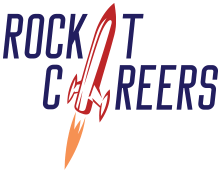When I first partnered with a new client, they were excited about the growth of their company, having just hired a promising new employee. But like many organizations, they faced the challenge of ensuring this fresh hire was seamlessly integrated into the team. As a consultant, one of my key roles was to help them design and implement an effective onboarding process. The right approach to onboarding not only improves employee satisfaction and retention but also ensures they become productive contributors faster.
I often emphasize to my clients that onboarding is more than just paperwork and training modules—it’s about setting the tone for long-term success. When I sat down with this particular client, we began by analyzing their existing onboarding practices. What I found was that while they had a basic orientation, they were missing key elements that would help the new hire truly understand the company’s culture, goals, and expectations. Here’s how we revamped the process to make it more effective, based on a few strategies I always recommend:
1. Start Before Day One
Onboarding doesn’t start on the employee’s first day. In this case, we implemented a pre-boarding phase where we the employee received a call from her new manager. We also sent the new hire important information about the company culture, the team structure, and even some company swag. This helps alleviate any first-day nerves and gives them a sense of belonging even before they step foot in the office.
2. Create a Structured Onboarding Timeline
When onboarding lacks structure, new employees often feel lost or unsure of how to prioritize their learning. I worked with my client to create a detailed 30-60-90 day plan for the new hire. This roadmap outlined clear goals for each phase of their onboarding, including meeting key team members, attending department meetings, and starting on their first project. A timeline gives new hires confidence that their growth is being guided purposefully.
3. Involve the Team from the Start
One of the major changes we made was engaging the entire team in the onboarding process. Rather than just having the new hire meet their immediate manager, we set up informal introductions with colleagues across departments. This helped the new employee build a broader understanding of how different teams contribute to the company’s mission. More importantly, it fostered relationships that made the new hire feel welcomed by the entire organization.
4. Provide Continuous Support and Feedback
Many organizations make the mistake of treating onboarding as a one-week event. I advised my client to implement ongoing check-ins with the employee’s direct supervisor. This gave the new hire the opportunity to voice any concerns or ask for guidance as they navigated their new role. Regular feedback loops also helped the company identify any areas where additional training or resources were needed.
5. Tailor the Experience to the Individual
While standardized processes are important, one of the most valuable strategies I’ve seen is customizing onboarding to the individual. During my consulting work with this client, we worked to understand the new hire’s previous experiences and current needs. Some people come in with industry knowledge but require help understanding company-specific processes, while others may need more technical training. By tailoring parts of the onboarding experience, the new employee felt supported in a more personalized way.
6. Infuse Company Culture from the Beginning
Company culture is often overlooked during onboarding, but it’s critical for new employees to understand what behaviors are valued. I always encourage my clients to share their mission, values, and the stories behind their successes and challenges early on. With this client, we organized a lunch-and-learn where leaders shared personal stories about the company’s journey. This not only helped the new hire understand the bigger picture but also connected them to the purpose behind their work.
7. Equip Them with the Right Tools
One of the key components of an effective onboarding process is ensuring the new employee has access to the right tools and resources. During my engagement with this client, we created a checklist of software, login credentials, and key documents that the new hire would need on day one. It’s surprising how often small things like not having the correct software licenses or system access can slow down productivity, so it’s critical to prepare ahead of time.
By the end of our consultation, my client had a new onboarding process that went beyond the basics and set their new hire up for success. Within the first few weeks, they reported that their new employee was more confident, engaged, and productive than they had ever seen with past hires. It’s a reminder that onboarding is an investment in your people—done right, it pays off in better performance, stronger relationships, and long-term employee retention.
Ultimately, an effective onboarding process doesn’t just benefit the new employee; it strengthens the entire organization. It fosters a positive, welcoming environment where employees feel supported from day one, which can be transformative for your company’s growth. As someone who has worked with businesses across various industries, I’ve seen firsthand how thoughtful onboarding can make all the difference.

